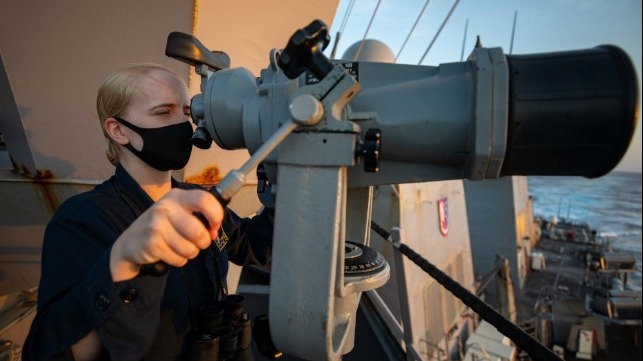GAO: Navy Needs to Overhaul Career Model for Surface Warfare Officers

The Government Accountability Office (GAO) has released a new report suggesting that changes are needed in the century-old model that guides the careers of the U.S. Navy's surface warfare officers (SWOs). After navigational errors led to two back-to-back collisions involving American destroyers in 2017, Congress instructed GAO to examine how the Navy trains and retains the officers who run its surface vessels. The Navy conducted its own study and identified deficiencies in the SWO career path and staffing policies, and it made changes to improve these areas.
GAO looked deeper: examining retention statistics, it found that SWOs are likelier to leave the Navy than their colleagues in the submarine, aviation and special warfare communities. Female SWOs are especially likely to depart, with 88 percent leaving the Navy within 10 years of starting their careers. This attrition rate comes with a cost: the Navy spends more than $630,000 on each SWO over the span of their first eight years of service, and that investment is lost when an individual departs.
Part of the attrition rate may be attributable to an oversized pool of junior officers. The Navy commissions nearly twice the number of SWOs needed
to fill its junior officer ranks, and this can limit training opportunities aboard ships. Between 2017-2021, the Navy needed an average of about 950 ensigns per year, but it commissioned about 1750. This pattern has persisted for at least the past 20 years, according to GAO.
The oversupply of junior officers is intended to compensate for a low retention rate through the eight-year mark, when the best performers are promoted to department head. But it leads to crowding on the bridge: last year, for example, the destroyer USS Mustin had 18 trainees to fill six billets. In practice, this increases the competition for limited training opportunities to qualify as ship drivers, according to GAO. The U.S. Navy's internal reviews have reached the same conclusion - that "the long-term practice of over-commissioning junior SWOs has directly contributed to declining SWO readiness."
In addition, most SWOs told GAO's investigators that they would rather have a specialized career path. The Navy is unique in its practice of training every SWO to work in every shipboard department. Aboard French, Italian, Japanese and British warships - and on U.S. Navy submarines and U.S. Coast Guard cutters - operations officers work in the operations department and engineering officers work in the engineering department, with regard to the specialized knowledge required for each role. Not so for SWOs, who typically rotate through multiple departments and ship classes throughout their careers. This arrangement has been in place since 1899 and has been only slightly adjusted over the decades.
Based on survey results, GAO estimated that 65 percent of SWOs believe that a switch to specialized SWO career paths would best prepare them for their duties, compared with just 16 percent who believe that the current generalist model is best. In particular, the respondents said that they would be better able to attain (and keep) mastery in a given department if they did not have to switch back and forth, and that specialization would help to retain technically-capable officers who are not bound for the Commanding Officer role. (Further, about half reported that they do not want to become a CO.)
"Although the U.S. SWO career path has a goal of developing proficient Commanding Officers, a significant number of SWOs do not want to become ship Commanding Officers—an option not currently available to senior U.S. Navy SWOs—and junior SWOs reported higher overall likelihood of retention with specialized career paths, including in a path that does not provide the opportunity to command a ship," GAO concluded.
The agency recommended that the Navy should follow up with a thorough review of the 120-year-old career model, starting with retention rate data.
